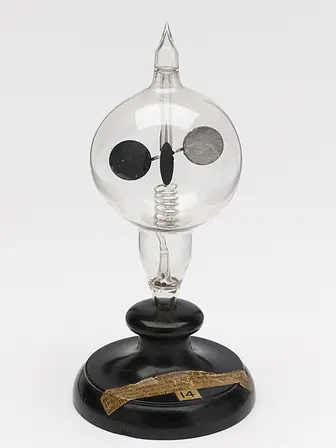T4K3.news
Light driven lift could loft metal sheets to exosphere
Researchers explore heat driven lift to reach near space without balloons or rockets.

An old device hints at a new path to near space by using heat differences to lift thin metal sheets toward the edge of the atmosphere.
Light driven lift could loft metal sheets to exosphere
The Crookes radiometer is a familiar sight in science museums, but its spinning blades are explained by photophoresis rather than simple radiation pressure. In a low-density gas, a temperature difference between the dark absorbing side and the cooler silvered side of a blade creates a subtle push that can drive motion. Now researchers say that by harnessing this same heat-driven lift, ultra-thin metal sheets could be raised toward the upper atmosphere, opening a potential path for lightweight probes between balloons and satellites. Early experiments have moved from bench setups to near-Earth tests to study how the effect behaves in real conditions.
If validated, the idea could offer a low-cost complement to traditional space access methods, allowing scientists to deploy sensors and demonstrators at altitudes previously reachable mainly by balloons or rockets. But translating the physics into a reliable lifting system will require solving practical challenges such as stable orientation, consistent lift under changing air density, and energy management for maintaining the necessary temperature gradients.
Key Takeaways
"Heat beats momentum in the near space race."
Editorial observation on the physics principle driving the concept.
"An old radiometer may unlock new routes to space."
Comment on how a classic device informs new research.
"Small heat gaps could lift big ambitions."
Encouragement about what tiny effects can enable.
"This approach will need rigorous testing before any deployment."
Caution about feasibility and real-world use.
The proposal shows how a decades-old curiosity can spark practical research. It reminds readers that progress often comes from revisiting simple physics with a new aim. This is not a replaceable rocket program, but a potential add-on that could broaden near-space experiments.
Yet the path from concept to routine tool is steep. Tech hurdles, funding cycles, and safety rules will test whether photophoretic lifting remains an intriguing idea or becomes a usable capability. If successful, it could seed a small but steady flow of experiments at the edge of space, complementing existing methods rather than overthrowing them.
Highlights
- Heat beats momentum in the near space race.
- An old radiometer may unlock new routes to space.
- Small heat gaps could lift big ambitions.
- Simple physics, big questions lie ahead.
Future tests will show whether light driven lift becomes a reliable tool for science beyond balloons.
Enjoyed this? Let your friends know!
Related News

Aviva profit rise and dividend hike

Stitch Fix returns to growth

Video game prequels redefine the series

Betsy Lewis, 75, celebrates life after stopping cancer treatment

TTArtisan launches compact 40mm f2

Mantle anomaly mapped beneath Appalachians

Northern lights visible in Michigan Friday night

BMW ends 8 Series run with rare M850i Heritage
